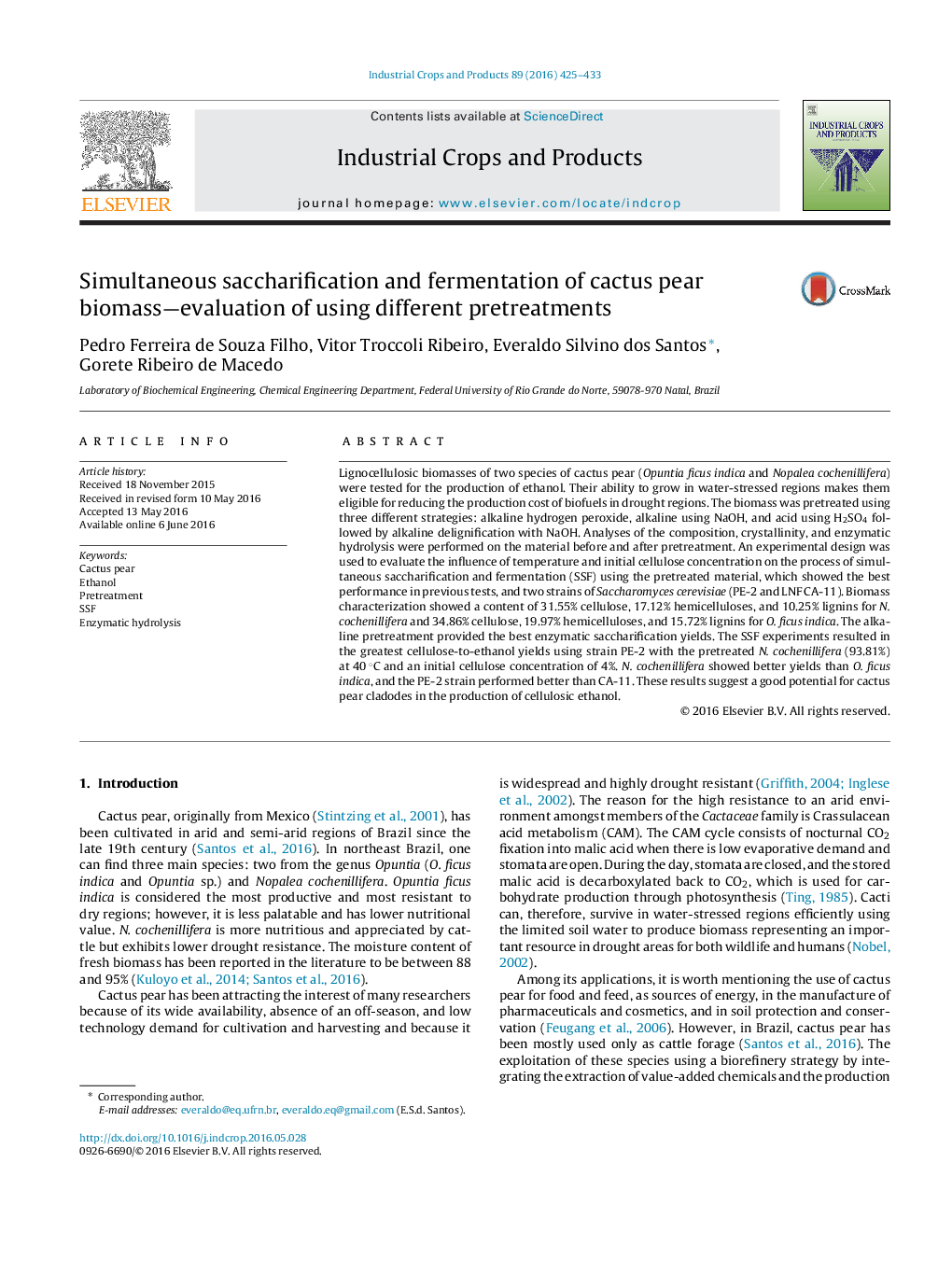| کد مقاله | کد نشریه | سال انتشار | مقاله انگلیسی | نسخه تمام متن |
|---|---|---|---|---|
| 4512148 | 1624821 | 2016 | 9 صفحه PDF | دانلود رایگان |
• Scanning Electron Microscopy (SEM) qualitatively characterized the biomass.
• Alkaline pretreatment allowed the best the enzymatic hydrolysis yield.
• Nopalea cochenillifera showed better yield performance during SSF.
• PE-2 is more thermo-tolerant than the CA-11 strain.
Lignocellulosic biomasses of two species of cactus pear (Opuntia ficus indica and Nopalea cochenillifera) were tested for the production of ethanol. Their ability to grow in water-stressed regions makes them eligible for reducing the production cost of biofuels in drought regions. The biomass was pretreated using three different strategies: alkaline hydrogen peroxide, alkaline using NaOH, and acid using H2SO4 followed by alkaline delignification with NaOH. Analyses of the composition, crystallinity, and enzymatic hydrolysis were performed on the material before and after pretreatment. An experimental design was used to evaluate the influence of temperature and initial cellulose concentration on the process of simultaneous saccharification and fermentation (SSF) using the pretreated material, which showed the best performance in previous tests, and two strains of Saccharomyces cerevisiae (PE-2 and LNF CA-11). Biomass characterization showed a content of 31.55% cellulose, 17.12% hemicelluloses, and 10.25% lignins for N. cochenillifera and 34.86% cellulose, 19.97% hemicelluloses, and 15.72% lignins for O. ficus indica. The alkaline pretreatment provided the best enzymatic saccharification yields. The SSF experiments resulted in the greatest cellulose-to-ethanol yields using strain PE-2 with the pretreated N. cochenillifera (93.81%) at 40 °C and an initial cellulose concentration of 4%. N. cochenillifera showed better yields than O. ficus indica, and the PE-2 strain performed better than CA-11. These results suggest a good potential for cactus pear cladodes in the production of cellulosic ethanol.
Journal: Industrial Crops and Products - Volume 89, 30 October 2016, Pages 425–433
